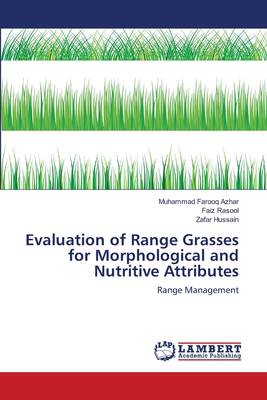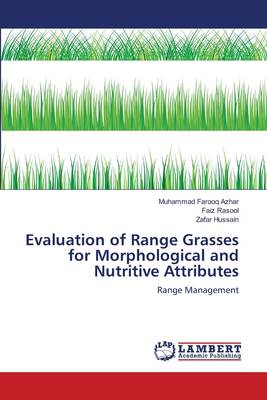
- Afhalen na 1 uur in een winkel met voorraad
- Gratis thuislevering in België vanaf € 30
- Ruim aanbod met 7 miljoen producten
- Afhalen na 1 uur in een winkel met voorraad
- Gratis thuislevering in België vanaf € 30
- Ruim aanbod met 7 miljoen producten
Zoeken
Evaluation of Range Grasses for Morphological and Nutritive Attributes
Range Management
Muhammad Farooq Azhar, Faiz Rasool, Zafar Hussain
Paperback | Engels
€ 57,95
+ 115 punten
Omschrijving
Rangelands are found roughly on fifty percent area of the earth and present nearly in all continents of the world. Grasses, herbs, forbs and shrubs are the dominant plant species in rangelands. Rangelands play a significant role in the livelihoods of vast number of rural people by providing forage and feed to livestock. The vegetation of the major rangelands of Pakistan like any other developing country of the world is associated with infertile soils, soil erosions, overgrazing and other environmental extremes. Grasses are the major component of the Rangelands and are highest potential yielder of starch and protein. Being the most palatable and nutritive stuff, grasses is good fodder source for the grazing animals. In view of the above said facts, the paramount importance and magnitude of generic variability of the grasses, various morphological and nutritional parameters of grass species have been investigated. The present study can be useful in the breeding programmes of forage grasses for developing their drought tolerance.
Specificaties
Betrokkenen
- Auteur(s):
- Uitgeverij:
Inhoud
- Aantal bladzijden:
- 112
- Taal:
- Engels
Eigenschappen
- Productcode (EAN):
- 9783659106088
- Verschijningsdatum:
- 24/04/2012
- Uitvoering:
- Paperback
- Afmetingen:
- 152 mm x 220 mm
- Gewicht:
- 177 g

Alleen bij Standaard Boekhandel
+ 115 punten op je klantenkaart van Standaard Boekhandel
Beoordelingen
We publiceren alleen reviews die voldoen aan de voorwaarden voor reviews. Bekijk onze voorwaarden voor reviews.








